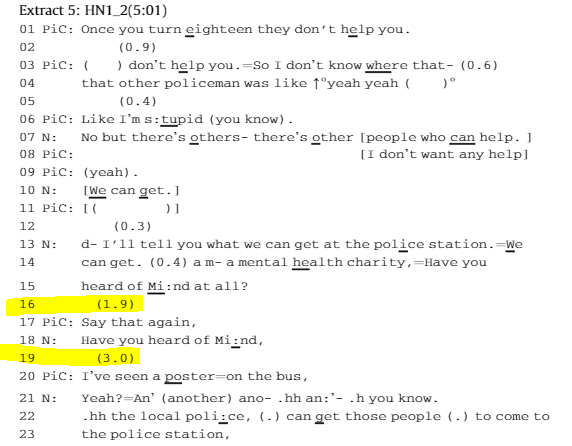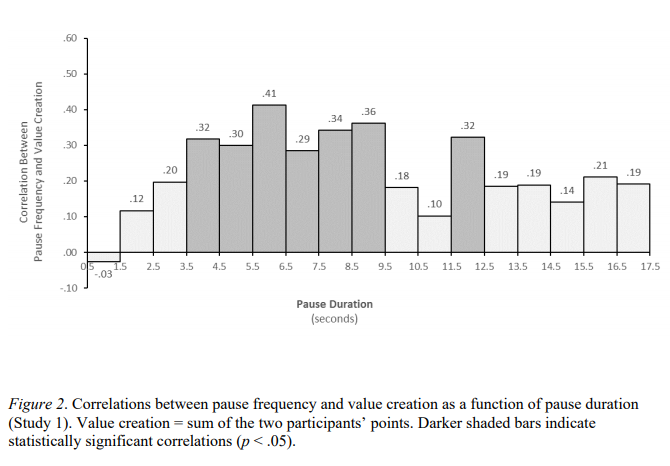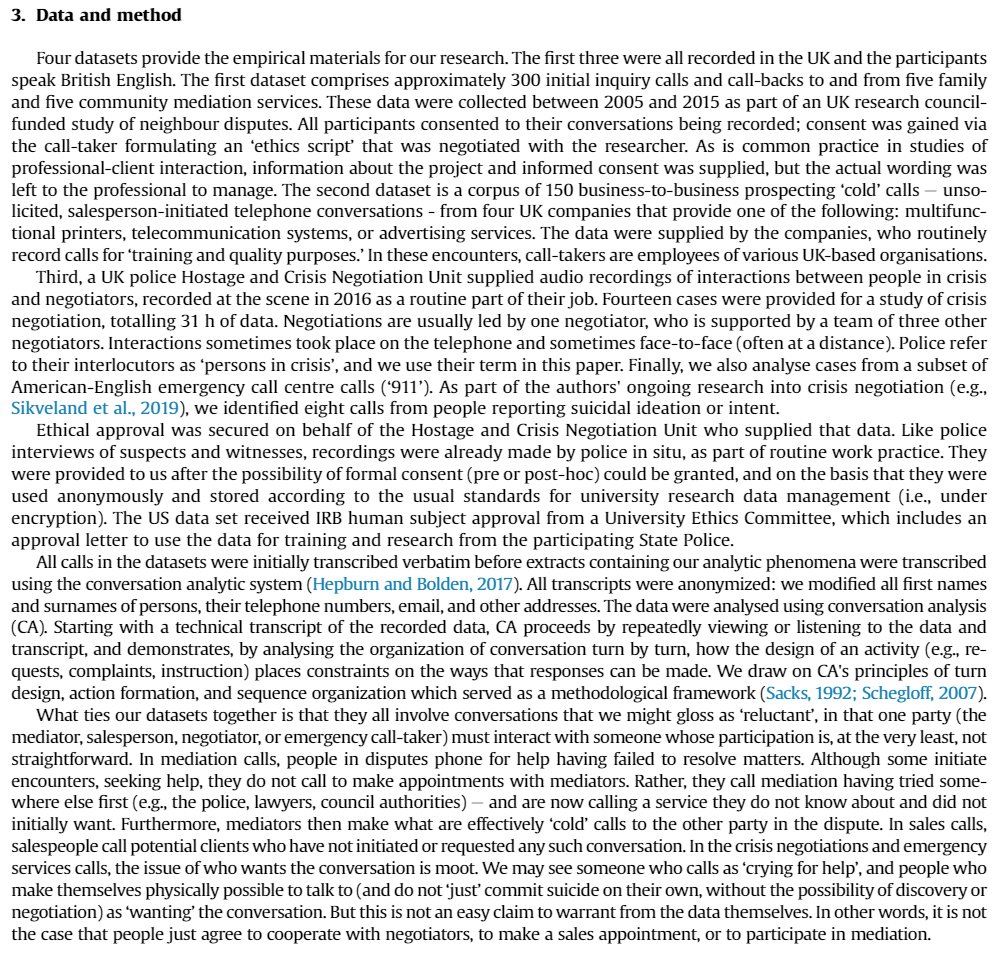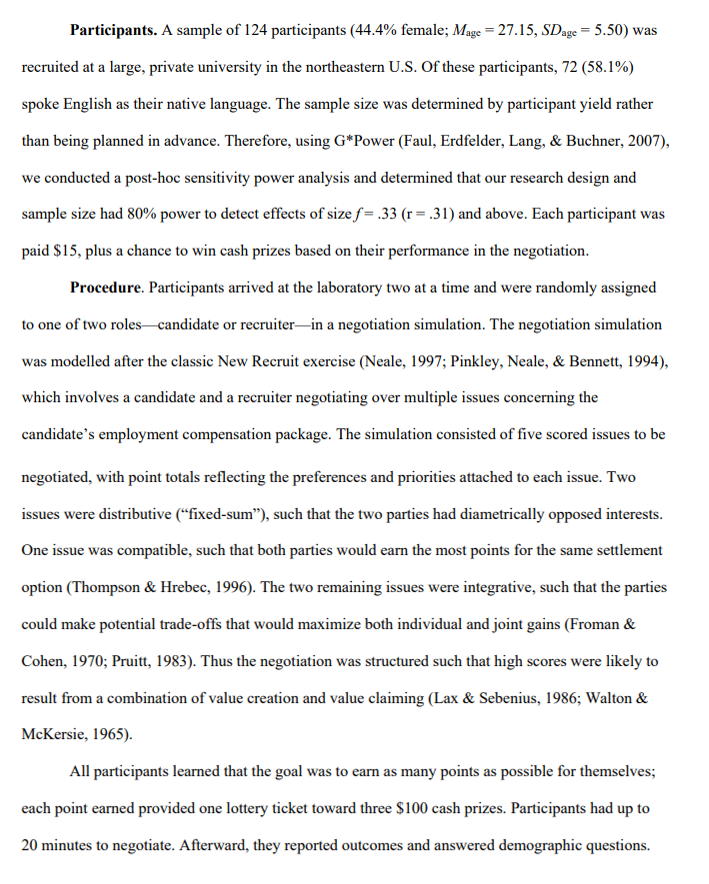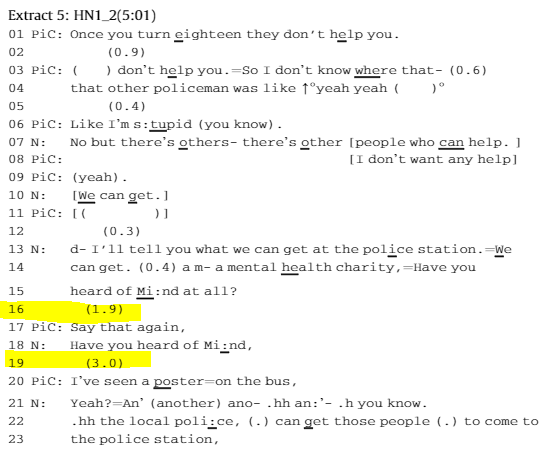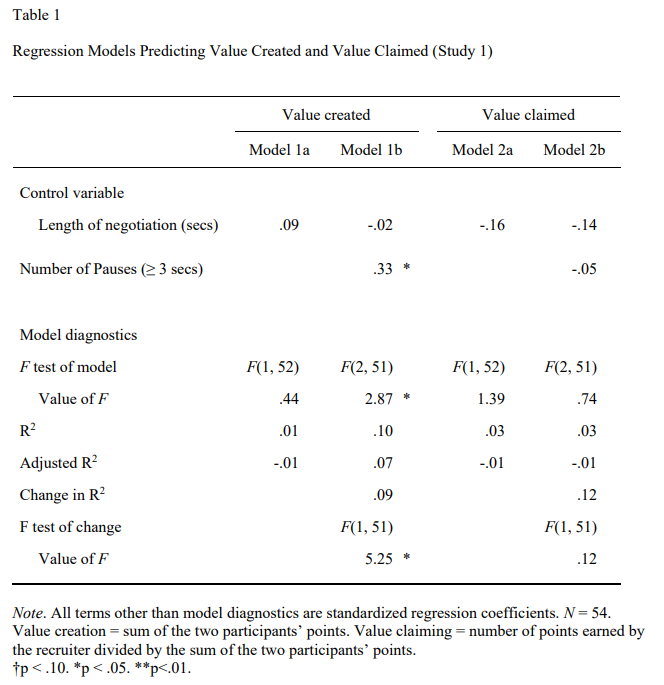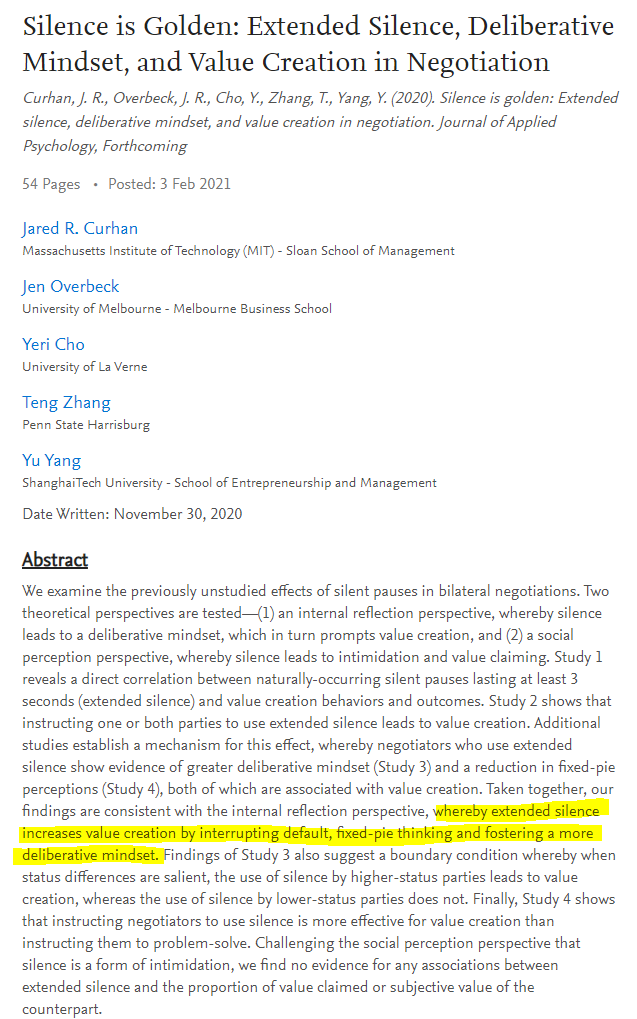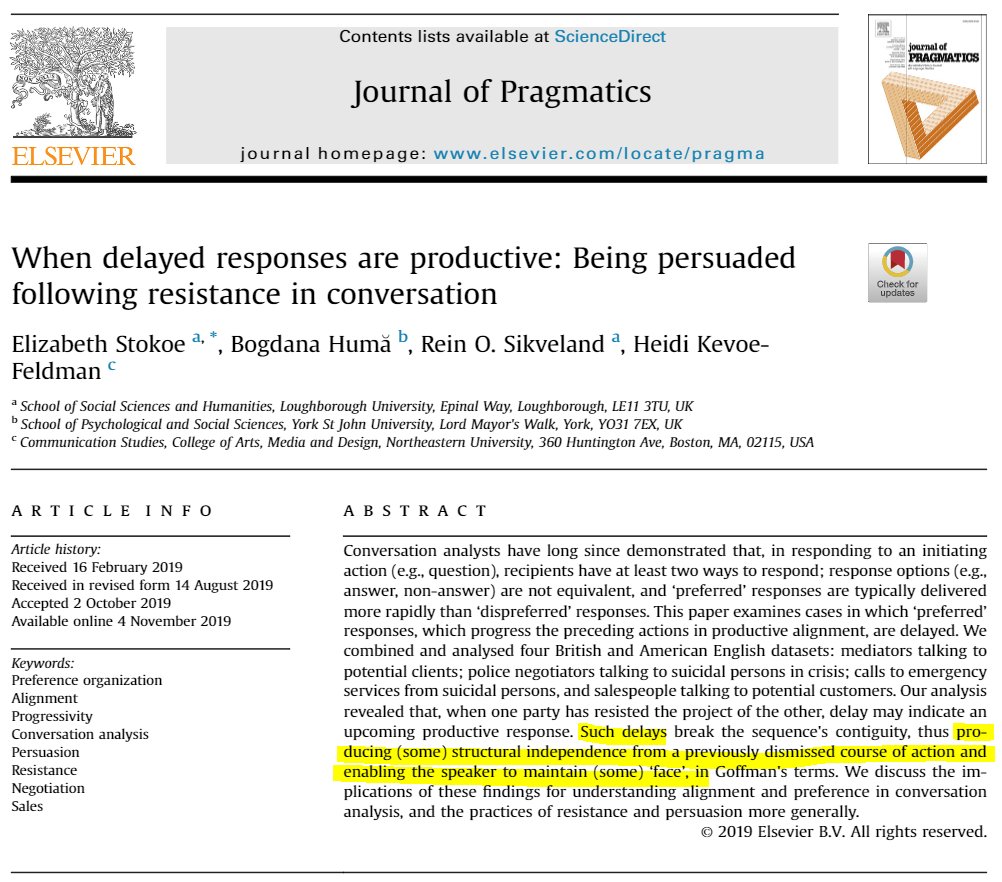Is silence golden?
A thread comparing #SocialScience methods for studying interaction - real conversation in the wild vs experimentally-produced in the lab.
Two papers on #negotiation, with overlap in headline finding, but very different in all other ways.
#Communication https://abs.twimg.com/emoji/v2/... draggable="false" alt="🧵" title="Thread" aria-label="Emoji: Thread">
https://abs.twimg.com/emoji/v2/... draggable="false" alt="🧵" title="Thread" aria-label="Emoji: Thread">
A thread comparing #SocialScience methods for studying interaction - real conversation in the wild vs experimentally-produced in the lab.
Two papers on #negotiation, with overlap in headline finding, but very different in all other ways.
#Communication
2. Opening frame:
In the lab: silence is a tool for intimidation OR a chance for internal reflection
In the wild: silence indicates the (likely negative or & #39;dispreferred& #39;) direction of the upcoming response
@EMdoesCA explains delayed responses https://abs.twimg.com/emoji/v2/... draggable="false" alt="⬇️" title="Pfeil nach unten" aria-label="Emoji: Pfeil nach unten"> https://www.youtube.com/watch?v=pLSmv9KJcdw">https://www.youtube.com/watch...
https://abs.twimg.com/emoji/v2/... draggable="false" alt="⬇️" title="Pfeil nach unten" aria-label="Emoji: Pfeil nach unten"> https://www.youtube.com/watch?v=pLSmv9KJcdw">https://www.youtube.com/watch...
In the lab: silence is a tool for intimidation OR a chance for internal reflection
In the wild: silence indicates the (likely negative or & #39;dispreferred& #39;) direction of the upcoming response
@EMdoesCA explains delayed responses
3. Defining silence:
In the lab: a 3+ second pause, AI-identified, experimentally manipulated (authors exclude "ordinary pauses" e.g. taking a breath before speaking)
In the wild: gaps between turns measured in Adobe Audition, 1.2 to 3.0 seconds (in-breaths not = pause/gap)
In the lab: a 3+ second pause, AI-identified, experimentally manipulated (authors exclude "ordinary pauses" e.g. taking a breath before speaking)
In the wild: gaps between turns measured in Adobe Audition, 1.2 to 3.0 seconds (in-breaths not = pause/gap)
4. Participants:
In the lab: 124 students (?) with gender & age info
In the wild: #EMCA analyses “repetitive, uniform, typical and COHORT-INDEPENDENT” practices (Heap 1990, p. 46)
In the lab: 124 students (?) with gender & age info
In the wild: #EMCA analyses “repetitive, uniform, typical and COHORT-INDEPENDENT” practices (Heap 1990, p. 46)
5. Data:
In the lab: Negotiation simulations (i.e. not naturally occurring) e.g., "modelled after the classic New Recruit exercise"
In the wild: 450+ recordings from crisis negotiations, mediation, 911, & #39;cold& #39; sales calls, transcribed using Jefferson (2004) technical system
In the lab: Negotiation simulations (i.e. not naturally occurring) e.g., "modelled after the classic New Recruit exercise"
In the wild: 450+ recordings from crisis negotiations, mediation, 911, & #39;cold& #39; sales calls, transcribed using Jefferson (2004) technical system
6. Analysis:
In the lab: algorithmic, natural language processing, experimental, time-lag analysis, retrospective self-report
In the wild: conversation analysis, next turn proof procedure, turn design, sequence, action
In the lab: algorithmic, natural language processing, experimental, time-lag analysis, retrospective self-report
In the wild: conversation analysis, next turn proof procedure, turn design, sequence, action
7. Findings:
In the lab: "pausing silently can be a useful tool to help negotiators shift to a more reflective mindset"
In the wild: when one speaker resists the other, delay may indicate an upcoming change of position and productive response
In the lab: "pausing silently can be a useful tool to help negotiators shift to a more reflective mindset"
In the wild: when one speaker resists the other, delay may indicate an upcoming change of position and productive response
8. Silence, or delayed responses, can sometimes indicate an upcoming change of stance or position.
The headline finding of the two papers seems similar. Their frame, language, methods, data, and assumptions are radically different - but SO interesting to ponder.
#Communication
The headline finding of the two papers seems similar. Their frame, language, methods, data, and assumptions are radically different - but SO interesting to ponder.
#Communication

 Read on Twitter
Read on Twitter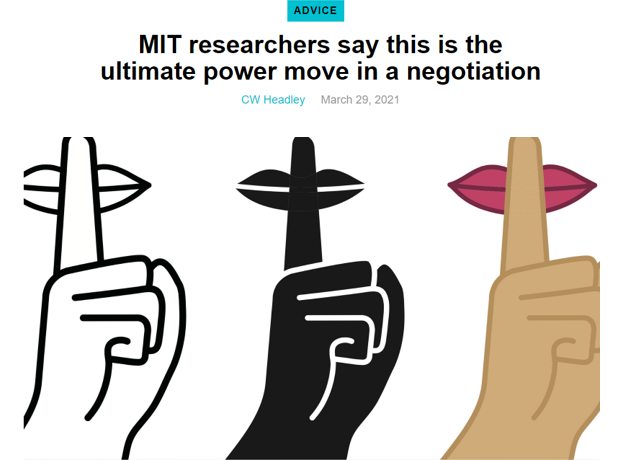 " title="Is silence golden? A thread comparing #SocialScience methods for studying interaction - real conversation in the wild vs experimentally-produced in the lab. Two papers on #negotiation, with overlap in headline finding, but very different in all other ways. #Communication https://abs.twimg.com/emoji/v2/... draggable="false" alt="🧵" title="Thread" aria-label="Emoji: Thread">" class="img-responsive" style="max-width:100%;"/>
" title="Is silence golden? A thread comparing #SocialScience methods for studying interaction - real conversation in the wild vs experimentally-produced in the lab. Two papers on #negotiation, with overlap in headline finding, but very different in all other ways. #Communication https://abs.twimg.com/emoji/v2/... draggable="false" alt="🧵" title="Thread" aria-label="Emoji: Thread">" class="img-responsive" style="max-width:100%;"/>
